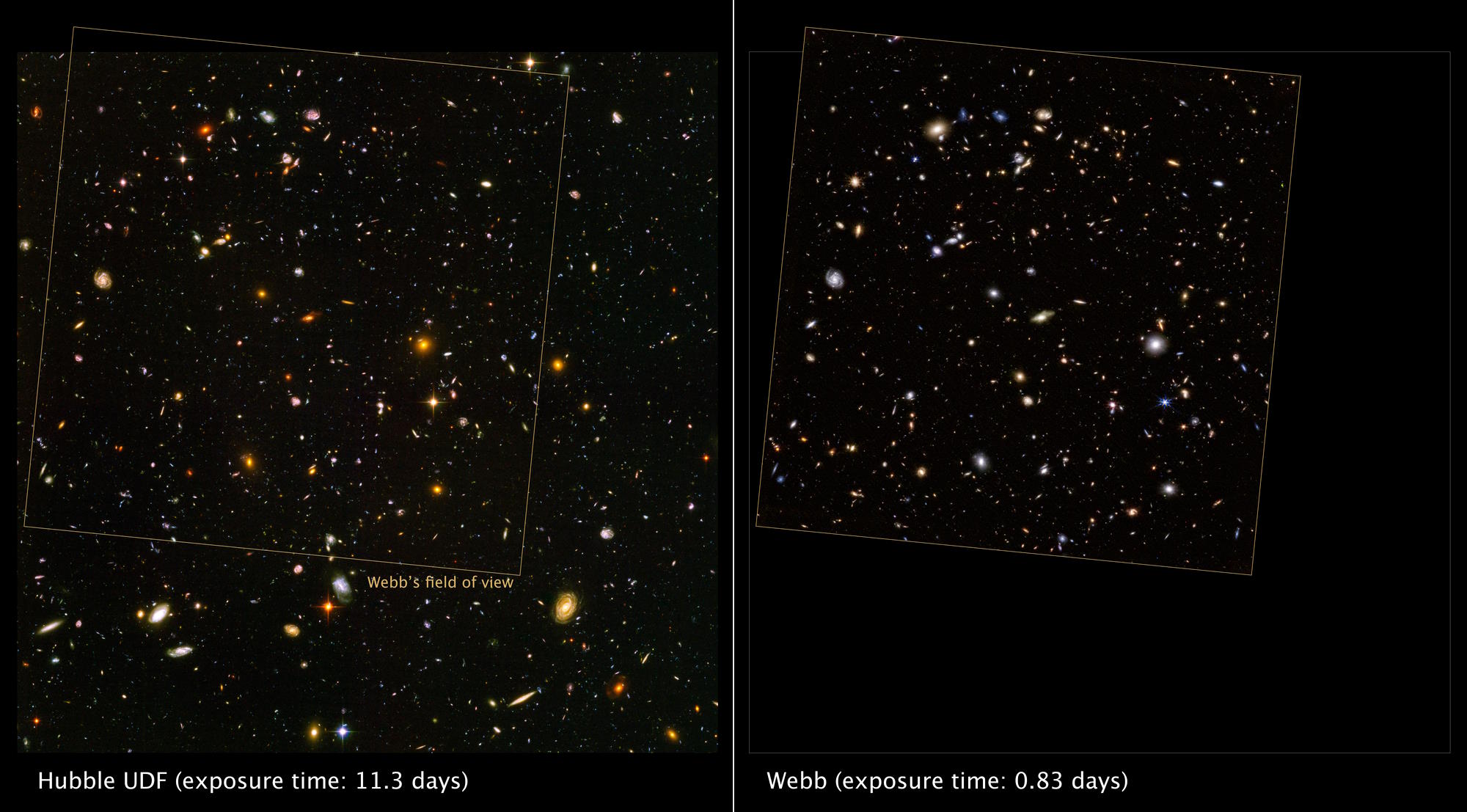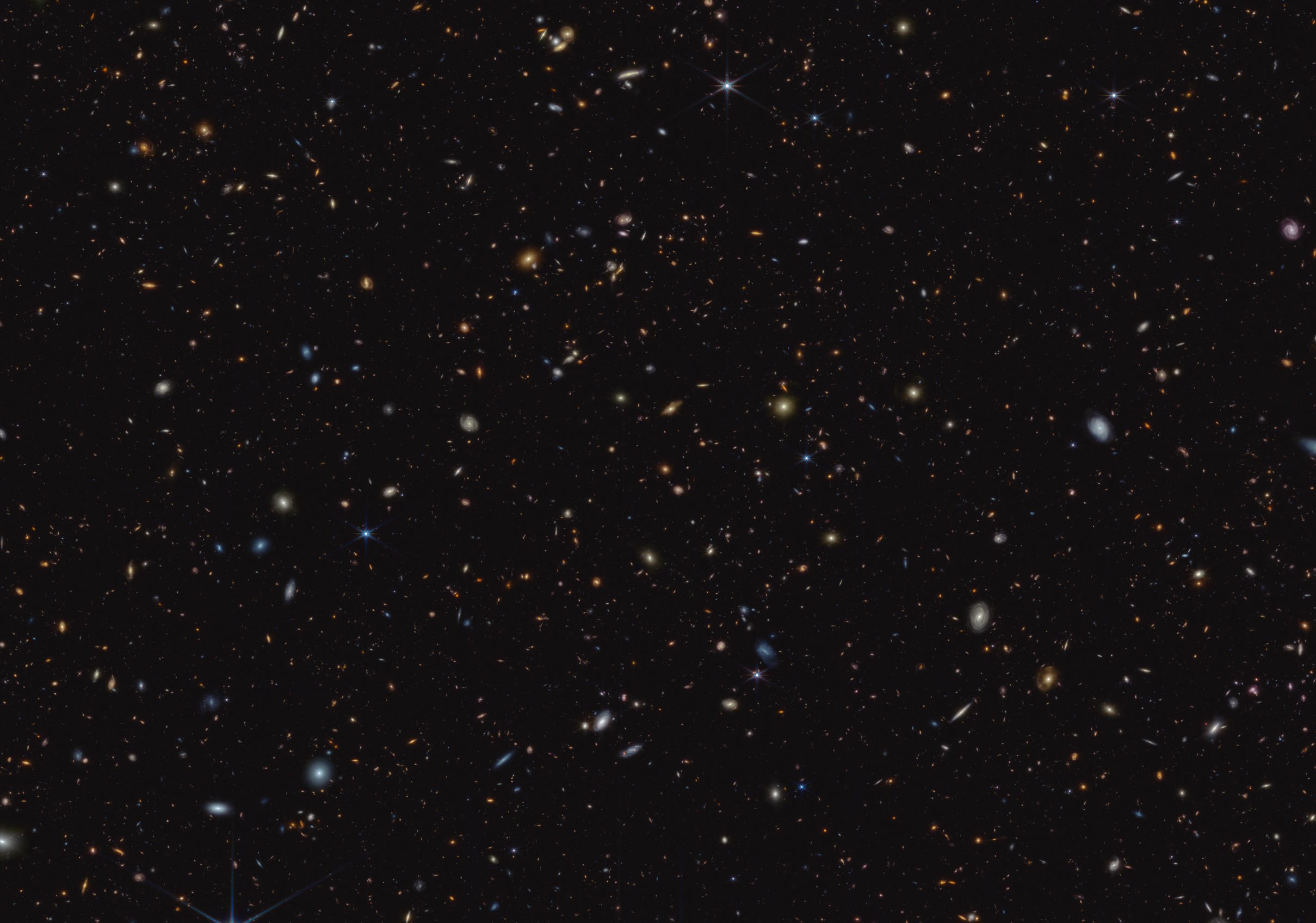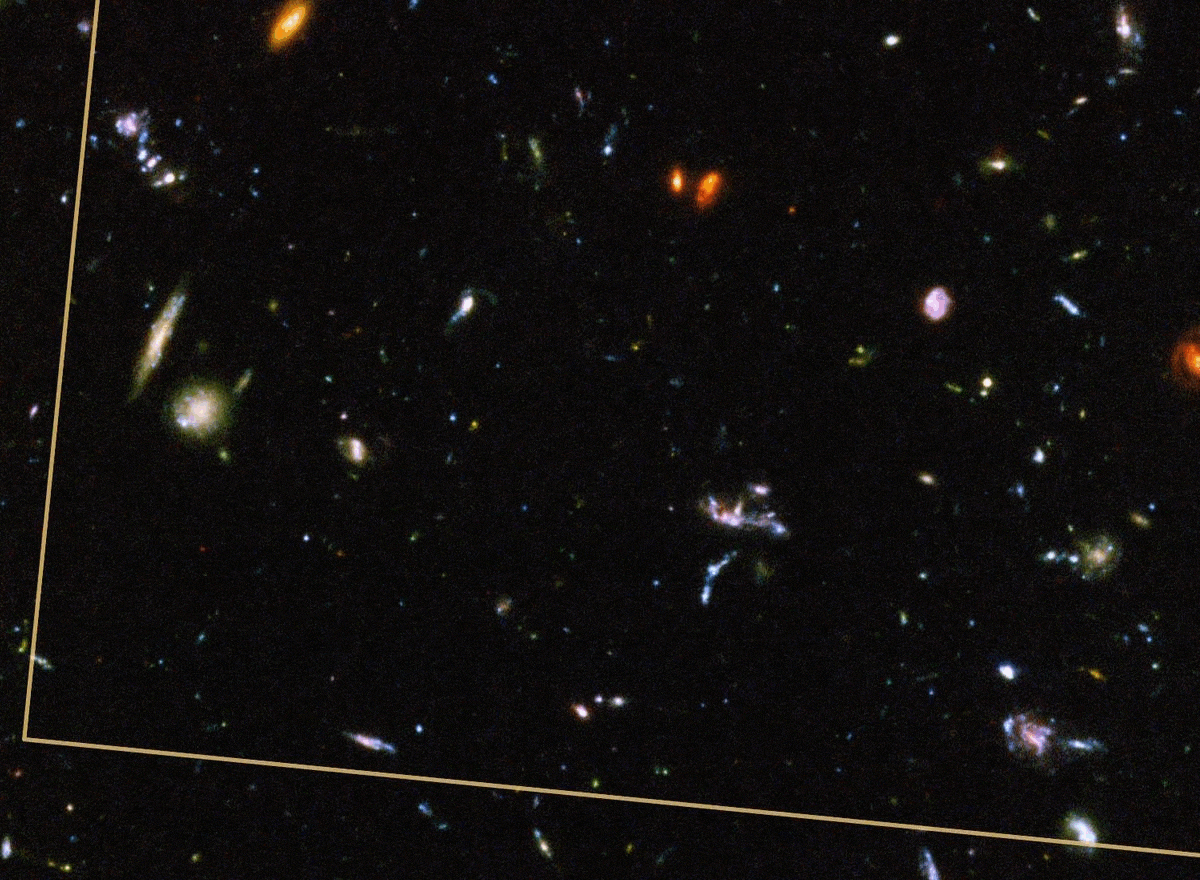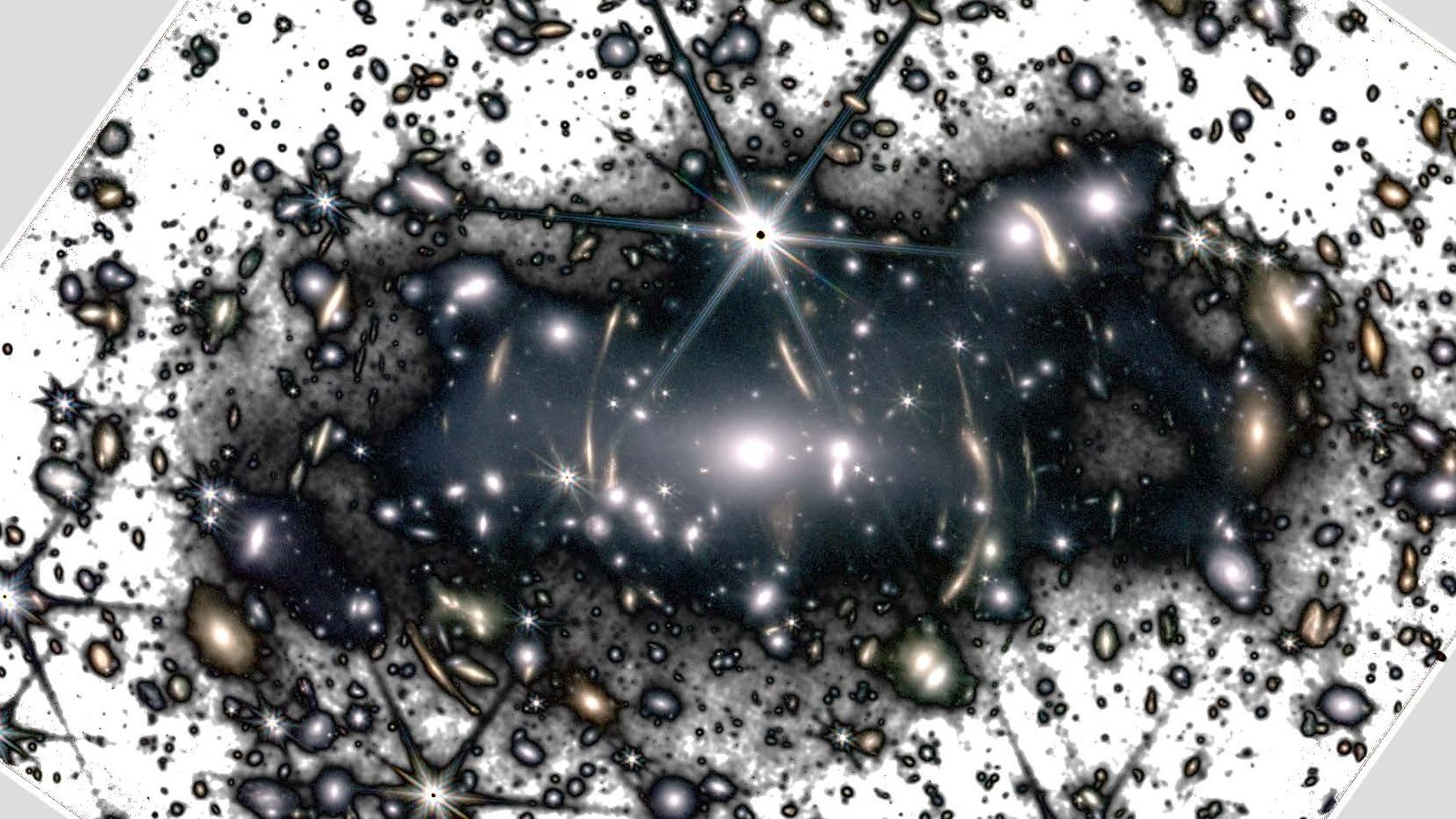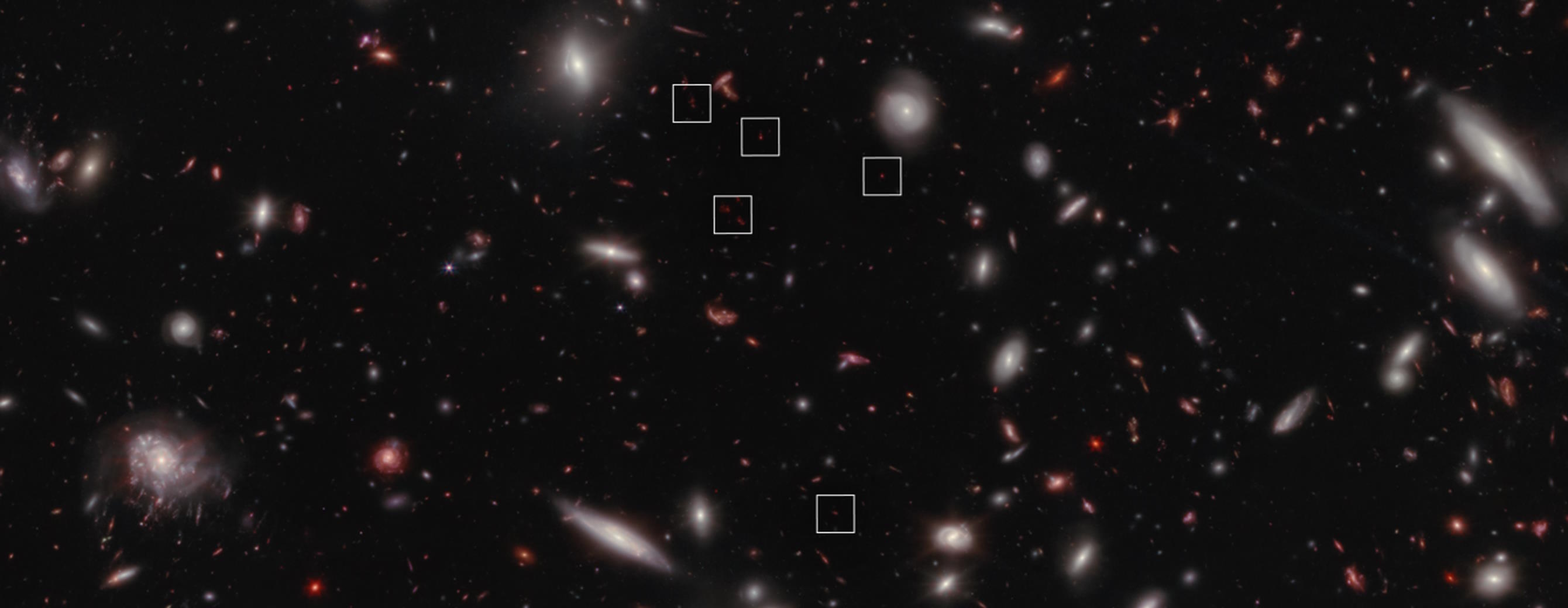NASA’s deepest 3D fly-through of the Universe

- With our own naked eyes, we can only see the stars and nebulae of the Milky Way and a few other nearby galaxies: all within our gravitationally bound Local Group.
- But thanks to a variety of observatories, including the Sloan Digital Sky Survey, Hubble, and now JWST, we can see what the Universe is like both near and far.
- With their newest visualization based on CEERS data taken with JWST, we can now “fly through” the Universe all the way back to when it was just 3% of its current age. Here’s what it looks like!
It’s hard to believe, but it was only 100 years ago — back in 1923 — that humanity first realized that the Milky Way galaxy didn’t encompass the entire Universe. That key discovery was made by Edwin Hubble, who, while observing what was then known as the Great Nebula in Andromeda, recognized that a periodic light “flare” he was seeing wasn’t a nova as he originally thought, but was rather a variable star located much, much farther away than any of the Milky Way’s stars. It was the first slam-dunk evidence that these spiral (and elliptical) nebulae, observed for centuries, were actually galaxies all unto themselves, or as they were called at the time, “island universes.”
Today, we now know that the observable Universe contains several trillion galaxies, with the earliest dating back to when the Universe was less than 3% of its present age. While we’ve only mapped out a tiny fraction of all the galaxies that exist, we’ve seen enough that we can not only describe what the Universe is like at each moment in cosmic history, but we can compose 3D visual reconstructions that show how the Universe’s galaxies appear and grew up over time. With a new, spectacular fly-through video released by NASA and the JWST CEERS (Cosmic Evolution Early Release Science) team, we can all now see what the Universe looks like for ourselves: from the Milky Way to farther back than ever before.
Start: the Milky Way
Our journey through the Universe begins right here at home, within our own Milky Way. One of the best-studied parts of the Universe is the closest region around our own Sun: including the stars, nebulae, and other objects located within only a few thousand light-years of ourselves. While the individual stars themselves might be the points of light we think of most frequently whenever we look up at night, as they are the easiest things to observe, our galaxy consists of so much more. This includes:
- gas,
- dust,
- stellar remnants,
- star-forming regions,
- and even hot, ionized plasma.
The new stars that form throughout the Milky Way are dominated by just a few large star-forming regions, with the closest one to us being located in the constellation of Orion: the great Orion Nebula. Containing many thousands of times the mass of our Solar System and with over 1000 new, young stars inside, this nebula is just a fairly typical example of one of the Milky Way’s star-forming regions. It’s fairly similar to other dense collections of gas, dust, and new stars found in our Milky Way, including the Omega Nebula, the Eagle Nebula, and the Carina Nebula, among others.
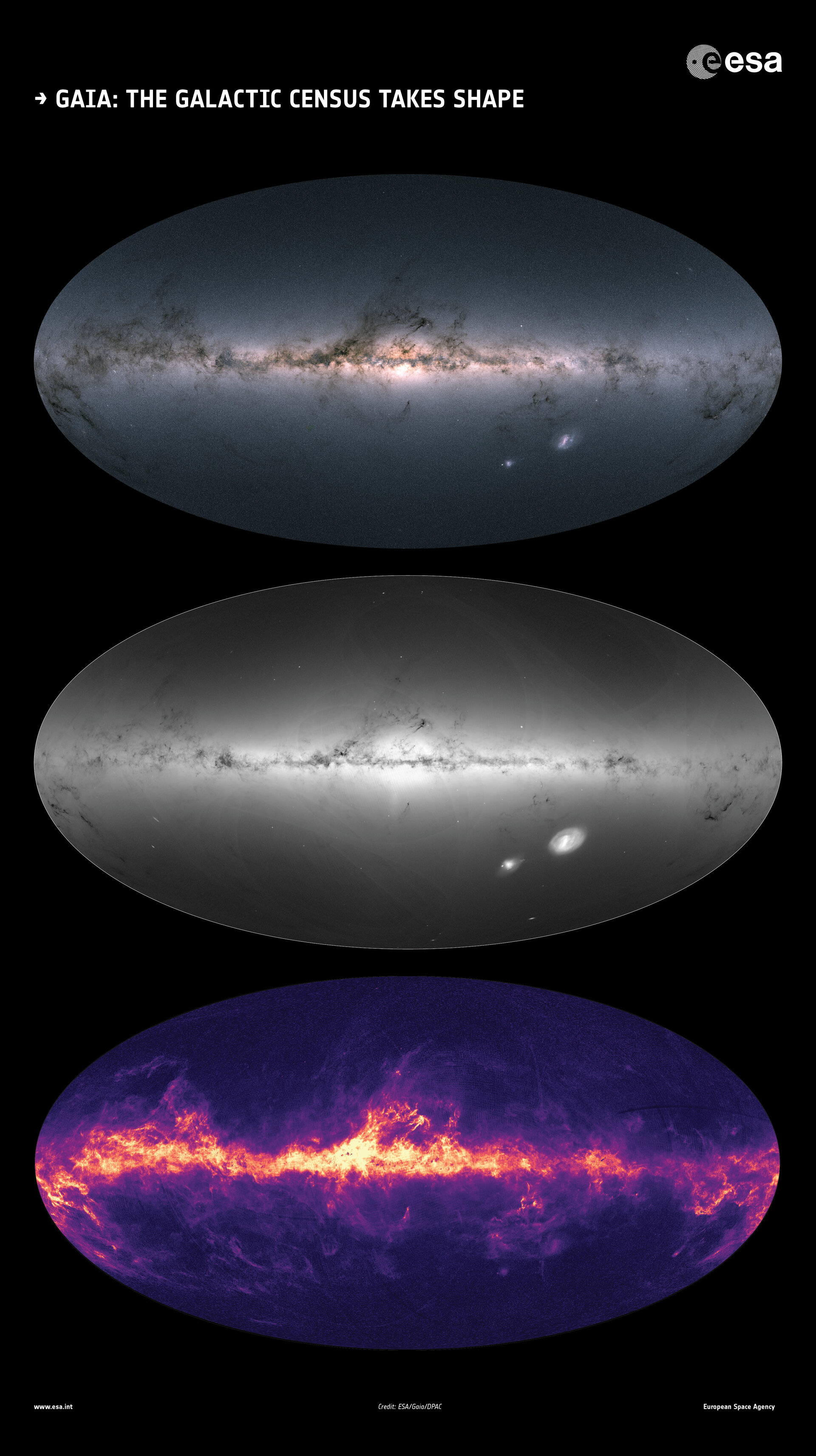
But perhaps the most spectacular part of our galaxy is the galactic center, extremely rich in stars and in possession of the Milky Way’s most massive black hole. Although the center of the galaxy is invisible to us in optical wavelengths of light, as the neutral matter within our galaxy’s disk blocks all the sources of light from the Milky Way’s central region, we can see clear through in infrared and radio wavelengths of light.
Quite spectacularly, the ESA’s Gaia mission has mapped more than a billion stars from within our Milky Way, and has shown us better than ever before what a journey to the center of our galaxy would look like. At the galactic core, our supermassive black hole anchors a slew of fast-orbiting stars, many of which are at risk of being torn apart from the intense tidal gravitational forces there. Others will be kicked to higher orbits or even swallowed entirely over time; our galactic center is a dynamic, violent, and often devastating place.
By combining the data from a slew of telescopes across the world, we can even visualize what a flight into the heart of the Milky Way would look like, including the orbits of the known stars closest to our supermassive black hole. It’s a spectacular view.
Next: a leap to nearby galaxies
Here in our Local Group, we’re seeing our Milky Way and our nearest neighboring galaxies as they are at this moment in time: 13.8 billion years after the Big Bang has taken place. As long as we restrict ourselves to the nearby Universe — to the galaxies whose light is arriving after a journey spanning a negligible duration of time relative to the age of the Universe — we’re seeing the Universe either as it is today or very nearly as it is today.
Although we don’t presently have an all-sky view of the Universe within a few hundred million light-years, we’ve mapped out enormous regions of space that are very close by, and have spent enough time with enough telescopes looking nearby that we’ve identified all the major groups and clusters of galaxies in our local vicinity.
Remarkably, we find that our Universe isn’t just a collection of individual galaxies as well as groups and clusters of galaxies, but rather that there’s a complex, web-like structure to things. The matter in our late-time Universe is preferentially distributed along cosmic filaments, with groups and clusters of galaxies forming at the nexuses and intersections of those filaments. In between them, meanwhile, are vast cosmic voids, some of which span more than 100 million light-years across.

The first survey to map out more than 1 billion galaxies in the nearby Universe — that is, the Universe where it’s at least 90% of its present age — was the Sloan Digital Sky Survey, which is still mapping our Universe in an ongoing fashion. If we wanted to know what the Universe looks like today, we can map out these galaxies in three-dimensional space and visualize what it would be like to fly through the space between those galaxies at any speed we wanted: even faster than the speed of light.
This was precisely what Miguel Aragon, Mark Subbarao and Alex Szalay did back in 2012 with SDSS data: creating a video that showcases what a flight through the local Universe might look like.
As you can clearly see from the video below, galaxies come in a great variety of shapes, sizes, and groupings, with large numbers of giant elliptical galaxies found within rich galaxy clusters and the more familiar spiral shapes found more commonly on the outskirts of galaxy clusters and in what astronomers call “the field,” or the regions of space that aren’t associated with any rich clusters. This shows off what the Universe looks like today, but if we want to know what the Universe looked like in the past, and describe how it grew up, we need to look even deeper.
After: going back in time and space
One of the most remarkable parts of the cosmic story is that the Universe, as it is today, is not the way it’s always been. Our Universe started out in a very different state than what we experience today. Instead of being:
- sparse,
- filamentary,
- cold,
- and with rich, evolved galaxies that are grouped and clustered together,
the early Universe was different in every way. Today, we observe that the Universe is expanding, and we know that the rate of cosmic expansion is directly related to the overall energy density of space itself.
Well, back at earlier times, the Universe was denser, expanding faster, less clumpy and clustered (i.e., more uniform), and also hotter, as the photons within it hadn’t been stretched to the long wavelengths they now possess at present. One of the most remarkable types of studies we’ve been able to perform are comparative galaxy studies: looking at the galaxies found within the Universe today and comparing them to galaxies found farther away and whose light was emitted at significantly earlier epochs in the Universe. Unsurprisingly, we find that galaxies have evolved, from a population-wide perspective, significantly over the billions of years that have passed.

One of the best ways to see this for ourselves is to perform what’s known as a “pencil-beam” study of the distant Universe. In this technique, we observe one single, tiny region of sky that happens to be devoid of any relatively nearby stars or galaxies. We observe it for long durations of times in a variety of wavelengths, including (and, perhaps, especially) in long, infrared wavelengths of light: wavelengths that are excellent for discovering and imaging galaxies whose starlight has been stretched to longer wavelengths by the cumulative expansion of the Universe that occurred since their light was first emitted.
Throughout the 1990s, 2000s, and 2010s, the best views of the distant Universe in this fashion came courtesy of the Hubble Space Telescope. The deepest view ever taken, prior to the launch of JWST, was of the Hubble eXtreme Deep Field, which observed a region of space so tiny that it would take 32 million comparably-sized regions to cover the entire sky. In that little narrow “pencil beam” of space, more than five thousand galaxies were revealed. They span all of cosmic history, from the relatively nearby Universe to more than 13 billion years ago: much closer to the Big Bang itself than to the present day.
By measuring the distances to these galaxies, we’ve been able to re-create what a 3D flythrough of those galaxies, near and far alike, would look like.
At last: the deepest ever views
But there are several limitations from taking this approach.
- First off, we aren’t seeing all of the galaxies out there; even in this deep view (above), we’re probably only seeing somewhere around ~1% of all of the galaxies that are out there. Most of them are small and faint, whereas the easiest ones to see are big and bright. We know we are significantly biased in what we’re able to detect.
- Second off, most of the galaxies that exist are probably satellite galaxies that orbit around the large, bright ones, and we don’t have the sensitivity to observe them; we struggle to even count the number of galaxies in our own Local Group, so the small, low-brightness galaxies that represent the most common type of galaxy are largely invisible.
- Third, for the first ~550 million years after the Big Bang (less in some places, more in others), the Universe was filled with light-blocking neutral matter, similar to what’s found in the disk of the Milky Way. We can only see the light from these early epochs that’s bright enough to pierce through that light-blocking veil.
- And fourth, the brightest galaxies of all are the ones that are actively forming stars over the entirety of the galaxy itself: a starburst galaxy. The earlier we look, the more likely we are to be seeing a starburst galaxy, and the more likely it is that the starbursting has been triggered by a major merger of two comparably-sized galaxies.

Although all prior observatories have succumbed to these limitations, including even Hubble, this is precisely the class of observations that NASA’s James Webb Space Telescope (JWST) has been designed to overcome. Looking at the Universe with larger eyes optimized for infrared wavelengths and for penetrating this light-blocking neutral matter, JWST has discovered many galaxies that have surpassed even the limits of Hubble. Observing programs like JADES, CEERS, GLASS, Panoramic, Cosmos-Web, and more are showing us how the Universe grew up like never before.
And unsurprisingly, it’s not only taught us some incredible science so far, shattering several cosmic records in the process, but it’s enabling us to visualize the young Universe as never before. As Steve Finkelstein, principal investigator of the CEERS collaboration, has put it:
“The sheer number of galaxies that we’re finding in the early universe is at the upper end of all predictions. We’re used to thinking of galaxies as smoothly growing, but maybe these stars are forming like firecrackers. Are these galaxies forming more stars than expected? Are the stars they’re making more massive than we expect? These data have given us the information to ask these questions. Now, we need more data to get those answers.”
With each second that elapses in the above video, it’s as though we’re traveling 200 million light-years farther into the data set, and looking farther and farther back toward the moment of the Big Bang. The last galaxy shown here is known as Maisie’s Galaxy: presently the fourth-most-distant spectroscopically confirmed galaxy of all, behind two galaxies from the JADES collaboration (JADES-GS-z13-0 and JADES-GS-z12-0) and one from the GLASS collaboration (GLASS-z12).
The most distant galaxies that we’ve ever discovered are just the tip of the cosmic iceberg: the brightest and most massive galaxies found at these extreme reaches of the Universe. As we continue to collect more and more data, the distant Universe will continue to come into focus, answering some of our present questions and opening up new avenues to investigate. A full understanding of our Universe, from the earliest times imaginable all the way to the present day, is finally closer than ever to being within reach.
